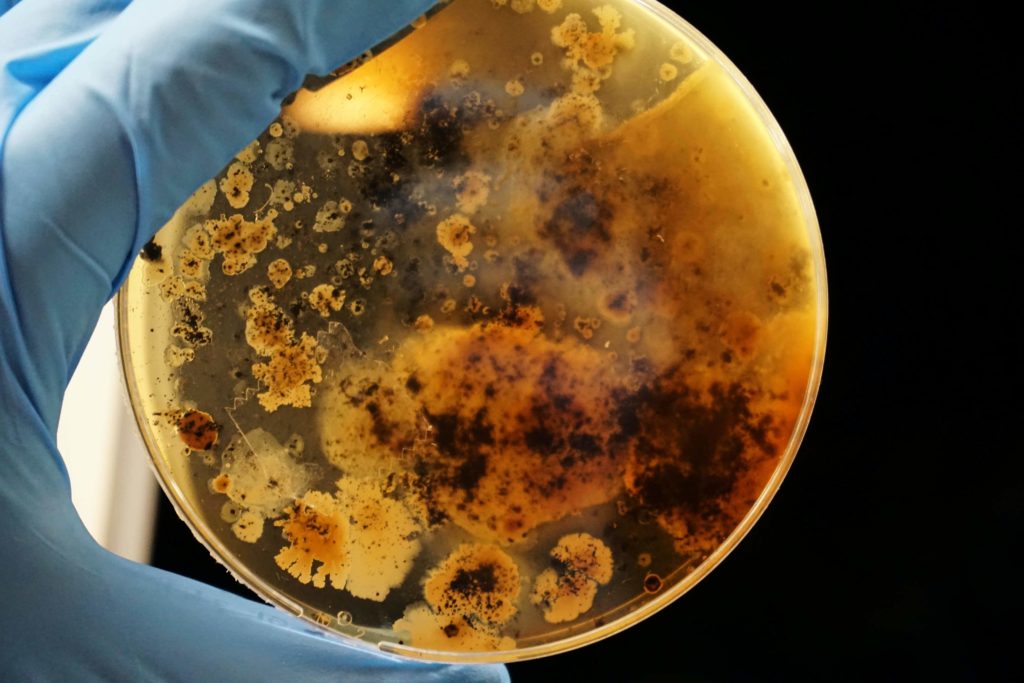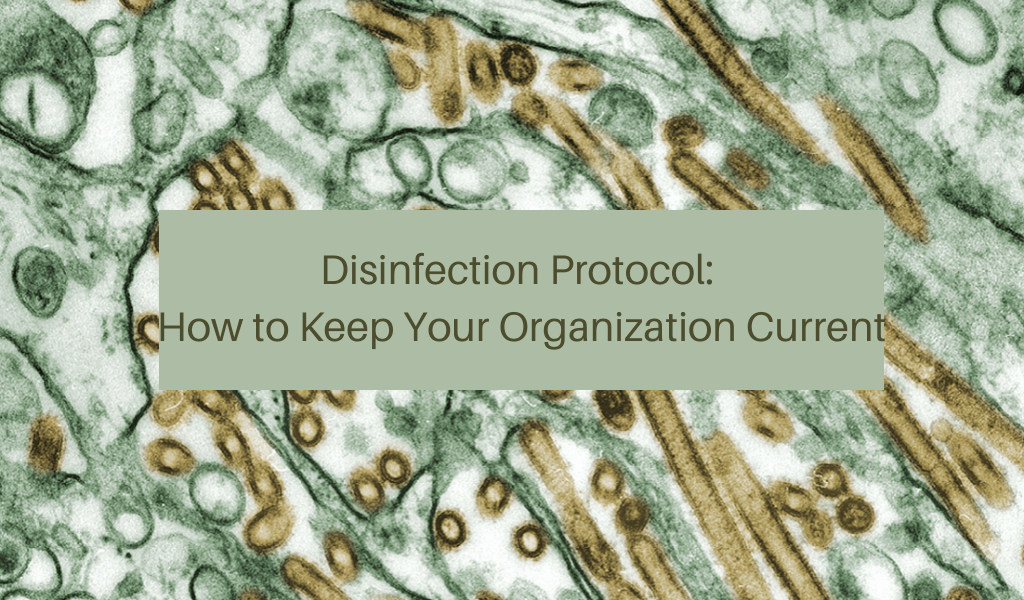A lot has changed in the last few years. Is your disinfection protocol up to date? Find out how to make sure your organization is current.
We probably don’t need to tell you that the disinfection protocol of commercial cleaning organizations and individuals alike has been big news recently. Even people who don’t know much about the cleaning industry are now aware of the differences between cleaning, disinfecting, and sanitizing.
We’ve also learned a lot about how germs and viruses can linger in the air, how long they can survive on different surfaces, and how cleaning products don’t all work the same way. You’ve likely had changes in your own disinfection protocol, from increased cleaning frequency of high-touch areas to new equipment like electrostatic sprayers.
But with all the changes, it can sometimes be hard to keep up. We miss information or get too much information and don’t know what to do with it. So how, exactly, do you keep current? Here are some tips that will help you know where to look and what to do.
If you are ready to take your cleaning organization to the next level, schedule a free call with Janitorial Manager to see how our software can make your janitorial operation more successful.

How to keep your commercial cleaning disinfection protocol up to date
This isn’t a step-by-step guide to updating your disinfection protocol. Instead, these are ideas, tips, and resources you can use to stay up to date, whether protocols change once a month, once each year, or stay the same for years. That said, there are some current protocols mixed in here that are important to be aware of.
1. Use The Right Resources. The interesting thing about any disinfection protocol is that it needs to be appropriate for the setting. Hospitals and medical facilities may require a more specific approach than an office building, for example. The Centers for Disease Control and Prevention have an entire section of their website dedicated to “Disinfection and Sterilization in Healthcare Facilities.” And the World Health Organization outlines the approach to cleaning and disinfecting for coronavirus in non-healthcare settings. So while you may find significant crossover, it’s still important to use the right set of directives.
2. Follow Industry Best Practices. Your professional cleaning organization should have well-researched educational opportunities for you to stay in the know on health-related topics. For instance, the ISSA has guides for commercial cleaners that outline current outbreaks and what, if anything, you should be aware of.
3. Take a Class. There are multiple organizations offering courses that could work here. OSHA has a Bloodborne Pathogen Exposure Control class, and BSCAI offers a Covid-19 Disinfection & Safety Course.
4. Review List N. If you’re looking specifically at coronavirus disinfection, ensure your products are included on the EPA’s List N of disinfectants expected to “kill all strains and variants of the coronavirus SARS-CoV-2.”
5. Keep Your Team Up To Date. Sometimes the most challenging thing about keeping current with a disinfection protocol or any protocols, really, is ensuring your team has updated information. That means going beyond just a text message or an email to them. Software like Janitorial Manager includes communication tools like QR Code Checklists that keep updated protocols available to all team members at any time and in multiple languages.
Of course, even with all of this, your team still needs to follow other essentials for disinfection. For example, contact time may be one of the most critical and potentially overlooked aspects of disinfecting a surface. Contact times may be as little as 30 seconds or up to 10 minutes, depending on the cleaning product you use. The product label should indicate how long this time is.
Additionally, cross-contamination can be a significant area of concern. A straightforward way to help avoid this is by using color-coded cleaning supplies. That way, no one has to remember which cloth they used or which bucket the clean items are in.
Lastly, regular janitorial inspections can help you understand how your team is working and how well your disinfection protocol is being followed. Inspections don’t have to be tedious or time-consuming, either. Again, good janitorial software comes into play here. Inspection templates and records are all in one spot, so you can track improvements and have a record of the work.
It’s easy to forget the important role commercial cleaning teams have in keeping customers safe and healthy. Of course, disinfection is a big part of that, but don’t forget to share some of that knowledge and work with your customers. Let them know how your processes work and why you follow certain protocols. It’s good marketing, of course, but it’s also a great way to help build those relationships and make your customers part of your team.
Harness the value of Janitorial Manager to communicate your disinfection protocol with your team. Learn more today with a free discovery call and find out how to make your cleaning business more efficient and cost-effective.

